In the hall of the mountain king - goats in New Zealand
by Anthony Tammett
Hunter 6
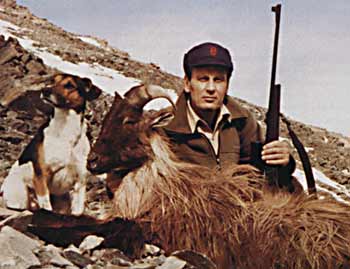 “Earthquake! Hang on!” yelled my guide, as I struggled for the last
handhold to pull myself over the top of the rocky bluffs we had just climbed.
“Earthquake! Hang on!” yelled my guide, as I struggled for the last
handhold to pull myself over the top of the rocky bluffs we had just climbed.
In man’s mind few things evoke a sense of stability more than mountain ranges and, yet, the sensation I had blamed on dizziness from exhaustion and the thin oxygen levels in the alpine atmosphere was the mountainside shaking like a quivering mass of jelly. It was a surreal, bewildering feeling that left me disoriented for a moment.
“Don’t move and hold onto something!” he ordered, as he lay down on the snowy ledge and instinctively gripped his frame pack, which he had shed only moments before.
Unbalanced by a backpack and rifle slung across my back, I seized the only convenient rocky outcrop within reach, which promptly crumbled into a dozen slate-like pieces in my hand. This shaly substance, so common in the Southern Alps, is brittle and prone to disintegrate suddenly when weight is applied to it, which means it fails just when a climber needs its support most.
We were high on a spur of the Alps in the Godley River watershed not far from Mount Cook National Park, the legendary home of the tahr genetic pool that consistently produces the top trophies in New Zealand. Behind us, to the northwest, the main spine of the Alps marched across the horizon, a jumble of snow-covered, spire-shaped peaks and valleys where green-blue ice fields could occasionally be seen where mountain gales had blown off the snow cover. In almost all directions sharp mountain peaks spiked the horizon, covered by a mantle of snow and ice. But, lower down the slopes, the flanks were a dark, sombre, greyish-brown: a striking contrast to the gigantic, white diadem above them.
The vertical, rocky bluffs we had just climbed were devoid of any vegetation. Below them, to the left, a chute filled with loose shale dropped perpendicularly several hundred metres: almost certain death or serious injury to any climber careless enough to fall into it. To the right, below the rampart of the bluffs, the snow-covered mountainside dropped sharply for a thousand metres until, a few hundred metres above the valley floor, it flared into a milder, snow-free slope. We had climbed along the right wall of the chute to avoid the snow that made the climb exhausting on the main flank of the mountain - a tactic that saved time, but greatly increased the danger of a fall.
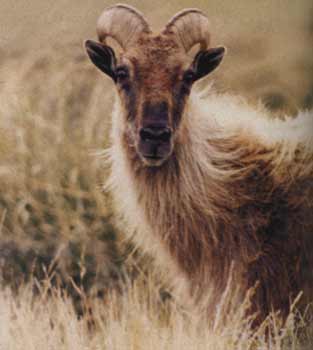 Rocks as big as footballs began tumbling off the bluffs and, despite my
precarious position, I thanked providence that we had not been caught
half way up by a rainstorm of boulders. I thrust my gloved hand onto a
sharp rock which, to my relief, held and abandoned any attempts to
climb the last metre to the safety of the ledge until the quake
stopped.
Rocks as big as footballs began tumbling off the bluffs and, despite my
precarious position, I thanked providence that we had not been caught
half way up by a rainstorm of boulders. I thrust my gloved hand onto a
sharp rock which, to my relief, held and abandoned any attempts to
climb the last metre to the safety of the ledge until the quake
stopped.
The trembling lasted only seconds, but a low, menacing rumble like the distant sound of a freight train approaching replaced it. “What’s that noise?” I asked warily.
He looked around for a moment before replying. “Avalanche.”
“Hell,” I said, scrambling onto the ledge, “what’s next? Fire and brimstone?”
“Relax,” he replied, pointing to a slope on the other side of the river. “It’s way up the valley.”
We watched fascinated as tons of snow dislodged by the quake came tumbling down the mountainside at express-train speed. The white, wraith-like substance looked almost delicate from a distance; a dangerously deceptive illusion that masks the true destructiveness of tons of hurtling snow.
When it stopped my guide shouldered his pack and pointed to the next ridge. “Not far now,” he promised. I followed sceptically, trudging through knee-high snow. When hunting in this type of country the top of the mountain always appears to be - but never is - the next ridge.
Early that morning, with a spotting scope from the valley floor, we had located a good bull on a pinnacle on a massive rock bluff system towering 1500 metres above us. After a five-hour climb we had reached the bluffs just below the bull. I had doubts that the tahr would still be there, but my guide assured me his movement would likely be vertical rather than horizontal late in the afternoon so he could feed on alpine grasses on the lower meadows.
We reached some huge boulders on a high plateau when suddenly his hand went up to indicate silence. I crawled up beside him and peered around the rocks to see a bull less than 100 metres away, standing on a rocky ledge overhanging the slope, his dark winter pelage blowing in the wind.
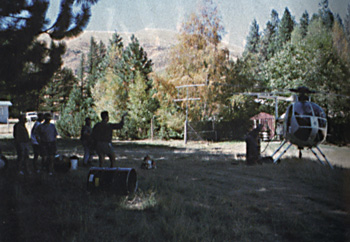 “Shoot. It’s close to 12 inches,” my guide whispered.
“Shoot. It’s close to 12 inches,” my guide whispered.
Shouldering the .300 magnum and using my pack for support, I settled the crosshair on his shoulder and squeezed off a shot. To my horror, the animal lurched forward and, as though on after-burners, went careering down the slope, tumbling hundreds of metres down the mountain.
“Don’t worry. He’s hit hard,” my guide assured me.
We found him 300 metres below us, incredibly, with horns and cape undamaged.
The experience with this bull is typical of tahr hunting; the animals rely almost entirely on their habitat for protection but, once you get to within shooting distance, they display a lack of wariness that is striking. The trouble, as always, is the terrain.
This requires special equipment. Good quality mountain-climbing boots are essential as well as expensive. They must have a solid, rigid sole and preferably a rubber rand completely encircling the leather base (essential features for kicking steps into crusty snow and as a ‘platform’ to balance on steep slopes).
A heavy parka is out when climbing - no matter how tempting it may be on a below-zero morning when you leave camp, as you’ll often be down to shirtsleeves despite the ice and snow around you. The best layering method is a shirt of cotton or light wool and woollen pullover and this is usually adequate when climbing in fine weather. A polar fleece jacket, an unlined Gore-Tex parka and woollen beanie and gloves should be carried in your pack, as these will be needed once the climb is over and you are motionless in the snow glassing for animals. Moreover, fogs and blizzards can strike rapidly and these items could save your life if you are caught out in bad weather.
Woollen pants are a must, though lighter ones that do not hinder when climbing are preferable. Many locals wear shorts even in winter, which seems to suggest congenital insanity, but Kiwis are remarkably inured to the hardships of the mountains and are extraordinary climbers. It is no coincidence that the first man to climb Mt Everest, Sir Edmund Hillary, was a New Zealander.
A quality torch and spare batteries in your pack are also essential. A few years ago, while hunting the Macauley River watershed in mid-winter we spotted a good bull on a razorback ridge that separated a creek from the main river valley. We were able to drive the Land Cruiser part of the way up on an old track but still did not begin climbing in earnest until lunchtime. As we closed to shooting distance we estimated we had about 30 minutes of daylight left, leaving no time for caping. “Shoot anyway,” my guide counselled. “We’ll come back tomorrow and cape him.”
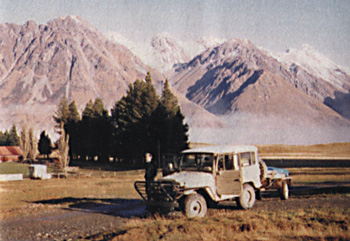 At the shot the animal dropped where he stood and, as we climbed up to
take photographs, the guide announced, “We have just enough time to
cape him to save us a climb back up tomorrow morning.”
At the shot the animal dropped where he stood and, as we climbed up to
take photographs, the guide announced, “We have just enough time to
cape him to save us a climb back up tomorrow morning.”
Apprehensively, I looked down at the long descent and watched the light ebb away while he caped the bull. It was early twilight when he finished and we were barely halfway down the mountain when darkness descended. A solid overcast had swept in obstructing any moonlight and turned the night into a solid, inky blackness; we moved on silently with the night wrapped around us like a blanket.
When we paused to get our torches from the rucksacks, only mine was found to be working and we stumbled slowly down the mountain with a single light until late that evening, miraculously, we found the car.
I have taken tahr successfully with a .270, on a hunt in the Havelock and Clyde River watersheds, but this should be considered the minimum calibre. I now do all my hunting with a .300 magnum, which is a far more efficient calibre given the frequent long distances and the need to anchor the blocky animal quickly in the roller-coaster terrain.
The most striking sight in the Alps is a bull tahr standing on a rocky ledge centimetres away from a sheer drop of hundreds of metres with his erect winter mane blowing in the wind. A bull begins growing its lion-like mane with the first frosts and it is fully developed by mid May. The mating season is usually late May to mid July but, unlike the deer rut, it’s of little help to the hunter because the main challenge is, as always, to get up into tahr country. Any bull of about 11 to 12 inches is a good trophy and anything in the 13-inch range is outstanding and akin to winning lotto.
Tahr are extremely sensitive to warmer temperatures and, although normally found in the 1400 to 1700 metre zone, in spring they will sometimes move down to the alpine valleys to feed on the spring flush of growth. If you are lucky enough to strike these seasonal conditions, the hunting will be relatively easy but, I hasten to add, this fortunate state of affairs is rare. Most likely you will have to climb up to the massive rock bluff systems where these acrobatic animals feel at home. The mountaineering feats of tahr will sometimes leave you literally open-mouthed. I once watched a disturbed bull literally climb a vertical, five-metre rock face with the aid of momentum before disappearing around a ridge.
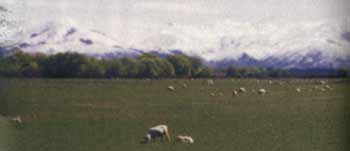 If you lack the masochism and physical fitness required for a foot
hunt, the easy option is a helicopter hunt. However, unless you are
lucky enough to spot a bull quickly, it can be expensive and will
probably require a second mortgage. This is a very different
proposition to a foot hunt and I even know of handicapped hunters that
have taken top bulls this way. As 180gn slugs through a helicopter’s
tail rotor don’t exactly enhance its handling, shooting from the
helicopter by clients is normally strictly ‘verboten’. Usually, once a
bull is spotted, you will be dropped off a few hundred metres away to
make the stalk. This makes the hunt very civilised and you will wonder
what all the fuss was about. It’s the only way some people will ever
take a bull tahr, but is more akin to competing in a runners’ marathon
with a Honda, rather than on shank’s pony.
If you lack the masochism and physical fitness required for a foot
hunt, the easy option is a helicopter hunt. However, unless you are
lucky enough to spot a bull quickly, it can be expensive and will
probably require a second mortgage. This is a very different
proposition to a foot hunt and I even know of handicapped hunters that
have taken top bulls this way. As 180gn slugs through a helicopter’s
tail rotor don’t exactly enhance its handling, shooting from the
helicopter by clients is normally strictly ‘verboten’. Usually, once a
bull is spotted, you will be dropped off a few hundred metres away to
make the stalk. This makes the hunt very civilised and you will wonder
what all the fuss was about. It’s the only way some people will ever
take a bull tahr, but is more akin to competing in a runners’ marathon
with a Honda, rather than on shank’s pony.
Even when the snow cover recedes, the climbing is still agonisingly hard. To make things more interesting, growing in great profusion on the mountain slopes are matagouri and Spaniards. Matagouri is thorny bush often growing in large colonies that sometimes gives you no option but to force your way through it. The branches are covered in a dense habit of thorns that easily penetrate heavy pants and will leave your legs covered in ugly scratches. For some perverse reason matagouri often seems to be the only thing available to grab onto when a climber needs a desperately urgent handhold - as for example when he’s teetering on the edge of a precipice.
More fearsome are the umbelliferous plants colourfully called Spaniards, which are common on some slopes. The tips of their long leaves are armed with a wickedly sharp needle - harder than Sheffield steel. Falling or sitting on a Spaniard is no laughing matter and will make you wish you’d stayed back in Christchurch sightseeing.
Sadly, some New Zealanders don’t appreciate the wonderful resource they have in their mountains. Indiscriminate, wholesale culling by the Department of Conservation (not a joke), whose aim is the eradication of all introduced animals, has reduced tahr numbers in recent years. Culling is a merciless business, with the shooting normally done from helicopters. It is as mechanical as swatting flies and about as agreeable. I’ve witnessed dozens of tahr shot this way in less than 30 minutes.
Tahr, though, are adapting; many will now hide at the first sound of a helicopter. I once watched a bull take refuge in a rock fissure the minute it heard the sound of the rotor. From the machine hovering 40 metres away, the shooter fired three rounds into the tiny cave to flush the animal out. But the bull, showing more nerve than me (who as an observer in the helicopter thought the whole business suicidal), would not move. Sadly, unless government policy changes, this capacity to adapt to aerial culling may be the only hope for New Zealand’s premier big-game animal.
